Employee Engagement Action Plan: 6 Instructive Ways to Implement It
Employee engagement is not just a buzzword; it’s a strategic need that organizations must have. It has become a critical driver of success and the backbone of any successful company. But achieving it is a time-consuming task that requires patience and persistence. And to aid your efforts, developing an effective employee engagement action plan is a necessary step.
A well-crafted plan will help organizations enhance workplace culture, improve retention rates, and create a motivated workforce.
But what goes into developing a plan like that?
Let’s delve in and learn more about it!
What is an Employee Engagement Action Plan?
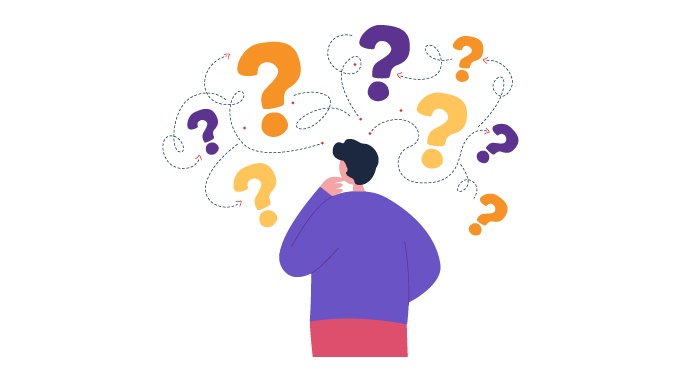
An employee engagement action plan is a powerful approach to attaining a work culture that is focused on empowering and engaging employees. Organizations can drive innovation, attract and retain top talent, and achieve better business results with a proper plan. It further helps you in-
-
Identifying and determining key engagement drivers.
-
Create a workplace ready to embrace change.
-
Provides a proper foundation for your employee engagement activities.
One key thing to remember is that each organization's employee engagement plan is unique. Each plan considers the specific needs and challenges a company faces. And as a leader, it is your responsibility to create a framework that reflects the organization’s values, mission, and goals.
Recommended Resource: 28 Best Employee Engagement Activities That Your Team Will Actually Love
What are The Necessary Steps In Establishing an Employee Engagement Action Plan?
Your engagement plan will require you to take specific actions to ensure your organization is headed in the right direction. Below is a list of steps that we believe will assist you in launching the ideal action plan for your workplace.
1. Analyzing the Current State of Employee Engagement
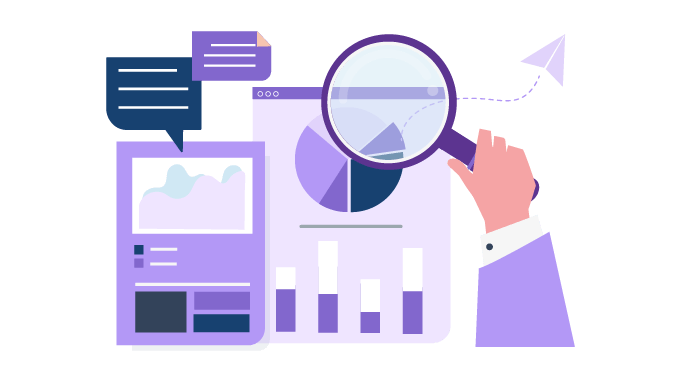
Are your employees happy with the current working conditions? Or do they feel aligned with the organization’s goals and objectives? Or would they prefer working for a different company with the same job responsibilities? These questions infer engagement, giving you a small picture of your organization’s engagement level.
But this is just the tip of the iceberg. Asking the right questions gives you a better understanding of what impacts and drives employee engagement. Some of the critical engagement factors include the following-
-
Work culture.
-
Management style.
-
Career growth opportunities.
-
Work-life balance.
-
Compensation and benefits.
You cannot, however, simply take a pen and paper and randomly ask your employees questions. Acknowledging how the employees feel about their workplace is a tricky process that pulse surveys can help with. Unlike traditional employee surveys, pulse surveys are quick and easy to conduct. The pulse survey findings highlight the numerous factors contributing to an employee's sense of belonging to a company.
Read Relevant Guide: Employee Pulse Surveys: The Ultimate Guide
However, anonymity is essential for obtaining honest and unbiased responses. When employees believe their responses will not be traced back to them, they are more likely to participate and answer honestly.
Fortunately, there are tools that allow you to create customizable surveys targeting the pain points in your workplace culture. These tools also include features that ensure employees' anonymity, resulting in increased participation and a more accurate understanding of the workplace. Choose a survey tool that includes this critical feature.
Aside from anonymity, the survey tool must be user-friendly and provide accurate insights and reports. The tool should ideally intuitively present the data, such as heat maps highlighting the organization's strengths and areas for improvement. Another useful feature is categorizing questions to show what employees are most concerned about. This can help managers understand the issues that must be addressed and prioritize action plans.

Screenshot Source: Vantage Pulse
You can try out different tools or opt for Vantage Circle’s Vantage Pulse survey tool with the above-mentioned functionalities. It’s an open choice that will determine the success of your engagement plan in the long run. Choose the best tool that fits your budget and aligns with your objectives.
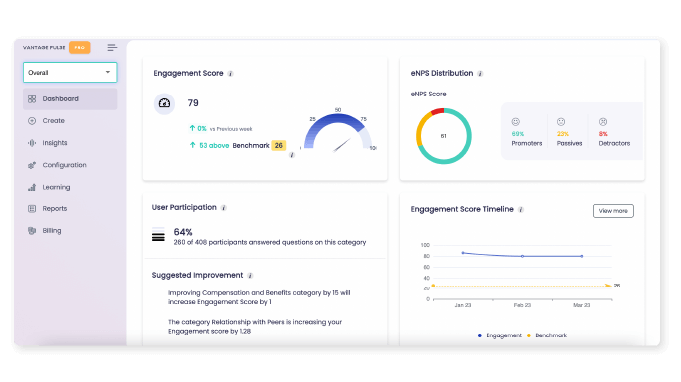
Screenshot Source: Vantage Pulse
2. Setting Engagement Goals and Objectives

Understanding what the employees feel and want from the organization is important. But, defining the organization's engagement goals and objectives is also critical. Your goals must be clear and measurable, providing ample opportunity to improve employee engagement.
Moreover, be specific about each goal and how it will align with the overall mission and vision of the organization. Doing it more precisely will provide a clear action plan for the workforce. A few key objectives can include the following-
-
Increasing employee satisfaction with positive reinforcement with rewards and recognition.
-
Providing good employee experience by focusing on employee empowerment.
-
Improving customer satisfaction by enhancing how employees deal with them.
-
Having higher retention rates with good work culture.
-
Enabling employees to learn and upskill with learning and development programs.
The important thing is that they should be robust and understandable, so everyone can work towards them without jeopardizing engagement levels.
3. Choosing the Right Employee Engagement Tool
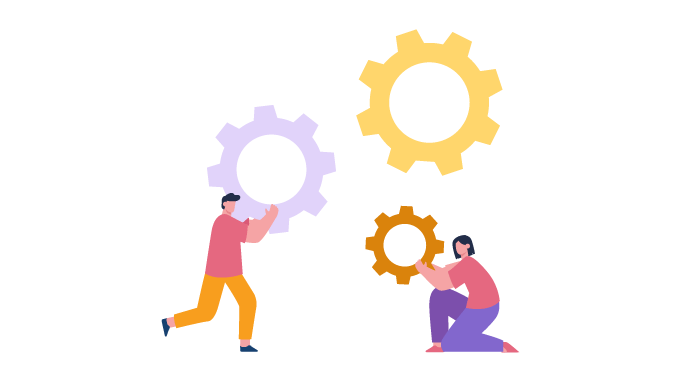
While setting your engagement goals, you need to start visualizing how you will achieve them. You need to be a step ahead in your planning which will give you an upper edge with your engagement plan. And to help assist you better in your employee engagement structure, you need to use technology correctly.
To leverage the flexibility of technology, you can try out SaaS-based employee engagement tools. These tools are easy to use, can be accessed remotely, and are highly customizable. You just need to choose the correct one compatible with your organizational structure and engagement plan.
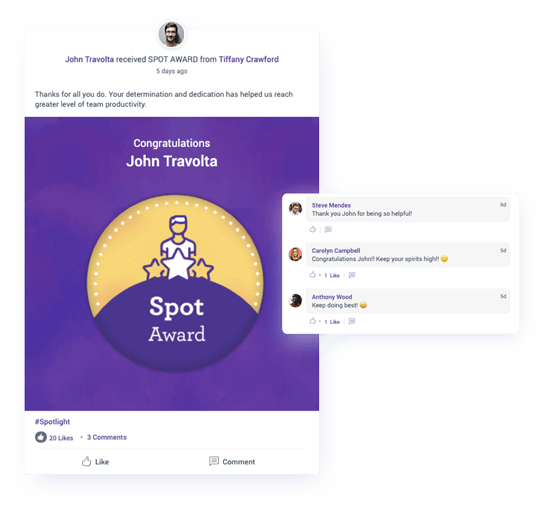
Screenshot source: Vantage Rewards
There are a plethora of tools available in the market that will meet your needs and requirements. It is critical to note that the tool is adaptable to changing corporate dynamics, ensuring future-proof functionality.
For example, a tool like Vantage Circle’s Rewards and Recognition solution with its AI and cloud-based technology could be the ideal solution for a forward thinking organization that want to stay ahead of the recognition game. In addition, an ideal platform should have features such as-
-
Integrating seamlessly with your existing communication tools or systems, simplifying and eliminating the need for platform switching in appreciating and rewarding employees.
-
Usability of virtual service yearbooks to celebrate the milestones achieved by the employees.
-
The availability of the SOLI matrix allows organizations to reward employees regardless of geographic location.
-
Gamified platform to elevate the user experience.
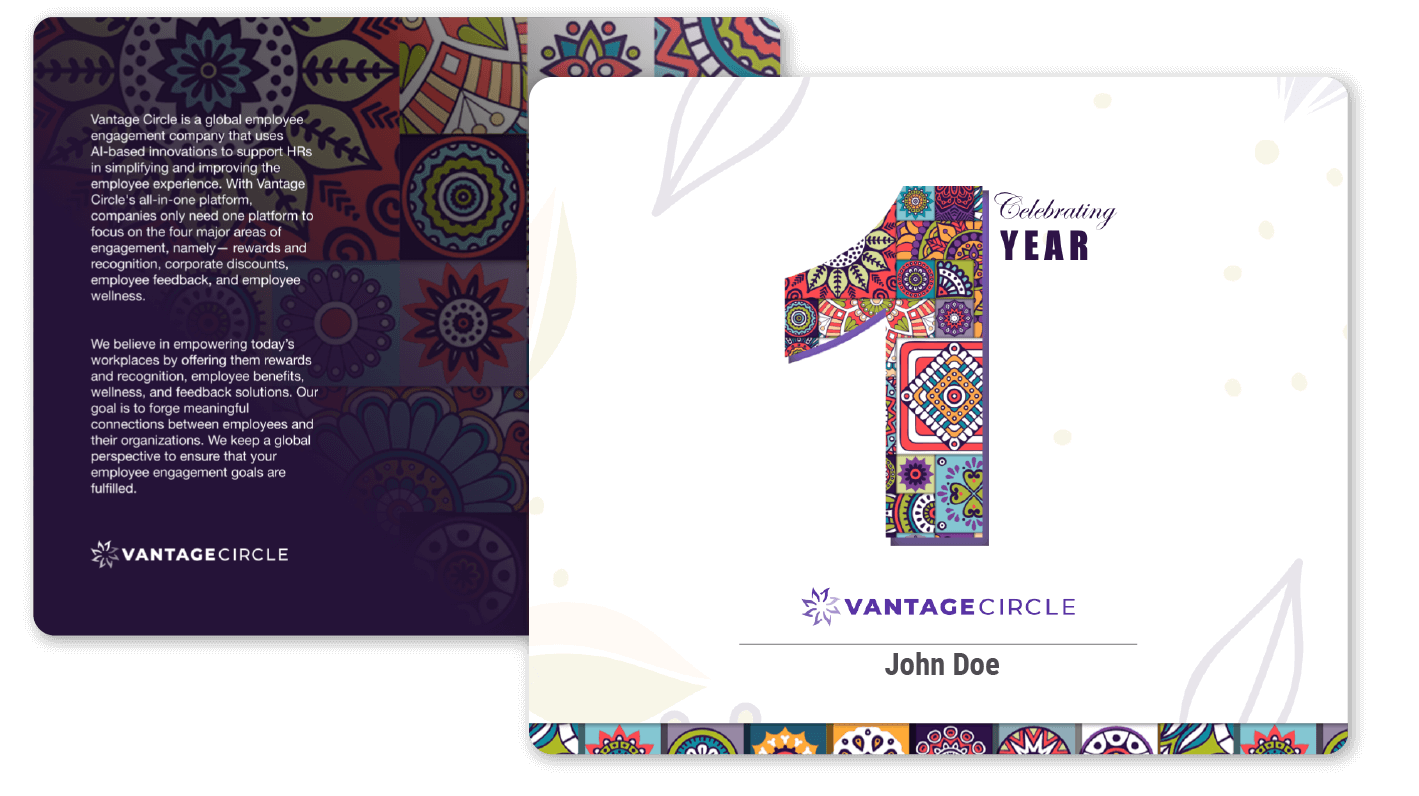
4. Implementation and Execution
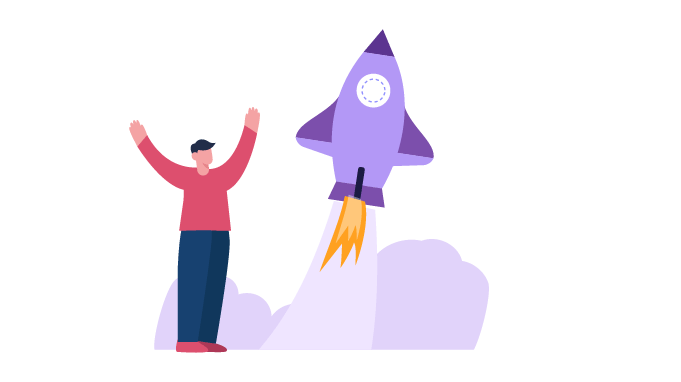
Now that you have chosen the right platform for your engagement plan, the next step is to implement it. But how are you going to do it?
The initial action is to take the knowledge and data you have gathered while measuring the state of your employee engagement. This will help you prioritize the areas where engagement is low. Secondly, you have to customize the tool according to the goals and objectives that you have set, which will determine the success of your engagement plan.
These simple steps will help you implement the engagement plan with the correct tool. It will also cement your stance in providing a work culture prioritizing employee engagement and productivity.
When it comes to the execution part of your engagement plan, you must ensure a few of the pointers-
-
Establish the goals and objectives with your employees and keep the communication channel transparent.
-
Showcase the importance of employee engagement and how it will help everyone grow together.
-
Assign responsibilities at the leadership level.
-
Make room for training and development while ensuring prompt support.
-
Remove bias and favoritism to keep things neutral at the ground level.
5. Monitoring and Evaluation
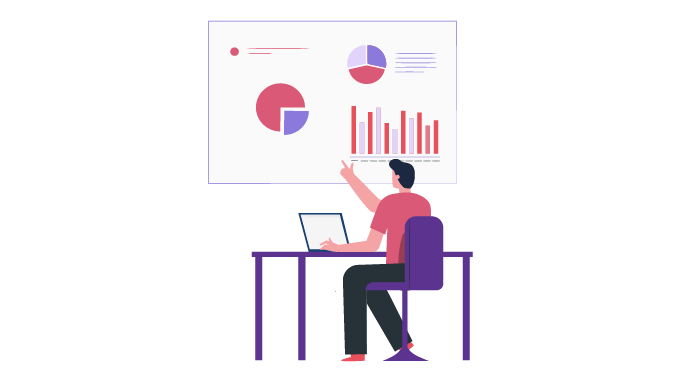
You have created a strategy, defined goals, chose the right platform, and implemented it successfully. But if you fail to measure it, your plan to create a culture of appreciation will hit a massive roadblock. To ensure that your engagement efforts are running smoothly, you must monitor and evaluate the action plan accordingly.
Firstly, analyze the data collected from the tool you use to identify trends, patterns, and areas of improvement. This will give you a clear idea of the gaps you must address.

Screenshot source: Vantage Rewards
Secondly, take action based on the insights gained from data analysis to improve employee engagement. Re-evaluate your employee engagement action plan as needed to ensure that it aligns with your organization's goals and objectives.
Here you must ensure that a particular tool's analytics is used correctly. For instance, Employee of the year or MVP awards can be given out to the employees who received regular recognition throughout the calendar year. This will give you the proper measurement of your engagement efforts while minimizing the bias factor in the workplace.
And thirdly, communicate your findings with relevant shareholders so that they are kept in the loop on the necessary steps taken by the company to improve employee engagement.
Form an exclusive team for the task of implementing the plan with the primary responsibility of measuring the success of the plan.
6. Continuous Improvement and Sustainability
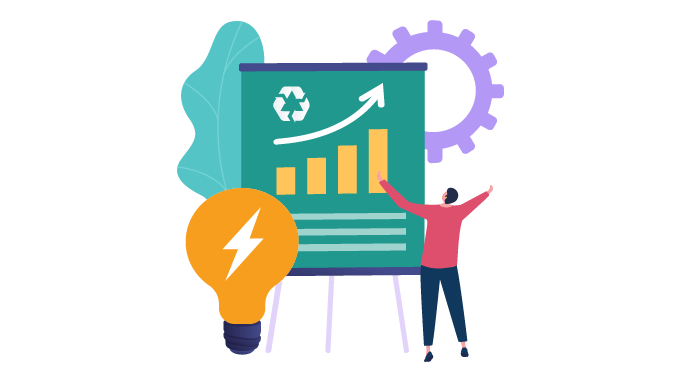
Organizations seeking long-term success must invest more in their employee engagement strategy. However, achieving it will require undeterred commitment while sustaining and improving it. To ensure that your employee engagement action plan remains relevant with the changing dynamics, you must develop a strategy adaptable to newer developments.
One way to accomplish it is to set up a feedback mechanism that allows employees to voice their concerns about the engagement plan. This will ensure you identify the gaps and update your strategy to meet the workforce's needs.
By keeping an open channel of communication and employee feedback, organizations can constantly strive to improve their engagement plan. In addition, it creates a work environment that values the employees by giving them equal voices and opportunities.
Employee engagement action plan examples
Let us look at a few employee engagement action plan examples to help you understand it in more detail.
1. Communication Enhancement Plan:
Communication is a pivotal element when it comes to improving employee engagement. Without communication, conveying the message you want to your employees is impossible. This can create a huge gap between your expectations and the employee’s job responsibilities.
To reduce that, have a transparent communication system in place. It should foster open and honest communication within the organization. This ensures that every important update, change, and information is shared promptly without any delay.
In addition to that, it should have a feedback mechanism that allows employees to voice their concerns, ideas, and feedback on organizational processes and practices. This should be assisted with two-way communication channels that make it more effective.
-
Encourage a two-way dialogue where employees feel comfortable expressing their opinions.
-
Have opportunities to engage in discussions with leadership.
Read more: Key Tips To Improve Workplace Communication
2. Training and Development Plan:
Doing the same work over time can be challenging and monotonous at the same time. But there is a way to break that monotony and help employees become more productive and skillful. That way is to provide them with good training and development opportunities with a strategic plan.
The first thing you need to do is conduct a skills assessment survey to identify the specific training needs of employees. This will help you tailor training programs accordingly.
Secondly, offer personalized development plans for employees, aligning their growth with organizational goals and their career aspirations. Doing this will ease their pressure and guide them in the right direction, which will help in their growth.
Remember that it is a process that requires perseverance and patience. It cannot be achieved in a month or two. Also, provide easy access to various learning resources that will encourage continuous learning and skill development.
3. Recognition and Rewards Plan:
Recognition and rewards go hand in hand when it comes to improving engagement in the workplace. And it perfectly fits in with your employee engagement action plan that will help bolster your efforts.
But what exactly do you need to do?
Reward and recognition are not something that you will perfectly achieve in one go. You need to be persistent, consistent, and specific. In addition, you need to align it with the employees’ preferences (e.g., public praise, private commendation), which will make it more impactful.
Moreover, you can also implement a mix of formal and informal recognition methods like employee of the month awards, peer-to-peer recognition, and a recognition wall. This will give you the flexibility to enhance and adapt recognition. And lastly, tailor rewards based on what the workforce wants. Cater to their needs by providing options for gift cards, extra time off, or opportunities to lead a project.
Take the help of virtual Reward and recognition platforms that are easily available in the market. Choose the one that fits your needs and the work culture. If possible, make modifications to make it easy to use and create awareness to increase usability.
At the end of the day, the employees should feel like part of the work culture and not outside of it.
4. Work-Life Balance and Well-being Plan:
Creating a good work culture can be an overwhelming task. And if you are struggling with it, you need to remember that work-life balance and well-being are an essential part of it. Having a plan that emphasizes both will work wonders for you.
The big question here is: how do you begin with it?
Initially, have a plan set on what you want to do. It can include things like offering flexible work schedules or remote working options. This helps employees to balance their work responsibilities and personal commitments.
You can also work on introducing stress reduction programs, mindfulness sessions, or yoga classes that promote employee well-being. Moreover, you can also encourage employees to take regular breaks and vacations to minimize the chances of burnout. Remember, a sound employee with good mental health is a productive employee. In the long run, this will help you create an organizational culture focusing on employees first, positively impacting the bottom line.
Read more: 25 Best Ways To Achieve Work-Life Balance and Its Benefits
5. Team Building and Social Engagement Plan:
If increasing employee engagement is a goal that you want to achieve, then team-building activities are something that you should look into.
Your team building plan can include things like offsite retreats, team lunches, or collaborative projects. This enhances team cohesion and significantly increases collaboration with greater understanding between team members. And to enhance cross-collaboration, you can organize events that bring employees from different departments together. It encourages inter-departmental relationships and knowledge sharing.
But how are you going to check if your efforts are working or not?
To do that, you can conduct regular check-ins to discuss progress on the collaboration. Moreover, you can create challenges for everyone to see if team bonding has increased or decreased. If you see any positive impact, celebrate team achievements, fostering a sense of belonging and camaraderie.
The goal is a unified workforce working towards a common goal in the long run.
6. Performance Recognition and Incentive Plan:
In this plan, you must define clear performance metrics and goals, ensuring employees understand their expectations. Moreover, you also need to clarify that their performance will be measured based on how they carry out their responsibilities.
You must also provide real-time feedback and recognition for achievements and milestones to boost their enthusiasm. However, remember that it is meaningful and motivating to each employee.
The best way to do it is to customize incentives based on individual performance, team achievements, or company-wide successes. This enables you to pinpoint your employees' strong areas and make them productive in the long run.
Employee engagement action plan ideas
You now have a fair idea of what revolves around an employee engagement action plan. But everything will be futile if you do not have many action plan ideas at your fingertips. And to help you with that, we have enlisted some impactful ideas that boost your engagement plan. Let us have a look.
1. Reverse Mentoring Program:
Mentoring your employees is a good way to start. However, one of the better ways is to try out the reverse mentoring program. Here, the younger or newer employees mentor the senior staff. In return, this helps provide fresh perspectives, bridge generational gaps, and foster a culture of continuous learning. In the long run, it keeps the workforce productive and engaged while embracing the newer developments.
2. "Day in the Life" Experiences:
Another great idea you can include in your engagement plan is the “Day in the Life” experience program. You can allow employees to spend a day in a different department or role here. This promotes a cross-functional understanding of how different departments work together. On top of that, it also enables greater collaboration and improved empathy in the workplace.
3. Innovation Sprints:
One of the great out-of-the-box ideas is to host short but focused periods of innovation sprints. During the sprint, the employees can work on a passion project related to the company. However, the twist is that it will be outside their regular duties. This enhances innovative thinking and generates ideas that work in favor of the company.
4. Monthly Book or Podcast Clubs
There are employees in your organization who are bibliophiles or are always up for good podcasts. You can organize monthly podcast sessions or book clubs for them related to personal development, industry trends, or any relevant topics. This brings a varied set of employees together and improves workplace bonding.
5. Skill Swap Workshops
Developing skill swap workshops is one of the coolest ideas to improve engagement. Employees can volunteer to teach a work-related skill (like Excel tricks) or personal (like photography). The workshop should be flexible and must have a wide variety of options. This promotes learning and showcases hidden talents within the organization.
6. Unconference Days
An unconference day allows participants to determine the topics and how the conference will flow throughout. It is different from the usual traditional conferences with a set agenda. This day enables employees to pitch their ideas and conduct sessions they are passionate about. In return, it promotes knowledge sharing and accountability.
7. Employee-led CSR Initiatives:
Allow your employees to pitch and lead community or environmental projects. This creates newer perspectives and is different from the top-down corporate social responsibility(CSR) activities. This fosters a sense of purpose and contribution among the employees, positively impacting their overall morale.
8. Gamified Feedback Platforms
Feedback from employees and for employees plays a critical role in elevating the work culture. It gives important insights about the workplace and how things should be done for everyone’s benefit. However, the usual feedback platforms or approaches can be dull and boring. To break that cycle, you can introduce gamified platforms that enable employees to earn points and badges. This makes it more engaging and improves workforce participation while allowing you to make data-driven decisions.
9. Personal Development Grants
Personal growth is something that every employee seeks when they start their professional journey. And you can support that cause by allocating an annual budget for each employee to pursue something they are passionate about. It can be something related to the job or unrelated to it as well. Whether it’s a pottery class or a coding workshop, the company cares about its holistic growth.
10. Quarterly "Unplugged" Retreats:
A break between work can do wonders for the employees and help reduce stress or burnout. You can organize retreats where employees disconnect from technology and engage in mindfulness, relaxation, and team-building activities. This will break the cycle of monotony of work and give employees a fresh mindset to work and fulfill their responsibilities.
Conclusion
A leader needs to understand how an engagement action plan will drive success to the business and positively impact the workforce. The more effective the plan, the better the results. You need to ensure that while the plan will help you drive engagement, you need to be proactive in executing the steps involved in it.
As a leader, you need to connect the employees with the goals you want them to achieve. In the long run, it will help you establish a concrete solution fostering an engaged workforce and a culture that values productivity.
FAQs
Q. What are the 5 Cs of employee engagement?
A. The 5 C’s of employee engagement are-
- Care
- Connect
- Coach
- Contribute
- Congratulate
Q. What are the drivers of the employee engagement action plan?
A. The main drivers of the employee engagement action plan include the following-
- Communication
- Leadership and Management
- Employee Development
- Rewards and Recognition
- Employee Involvement and empowerment
- Work Culture
- Employee Well-being
- Feedback and Performance Management
Q. What is a smart action plan for employee engagement?
A. When it comes to the smart action plan for employee engagement, one should follow the SMART rule that consists of five crucial elements, which are-
- Being specific about the goals.
- The goals should be measurable.
- With measurable, it should be attainable as well.
- The targets should be relevant to what you want to achieve.
- And lastly, it should be time-bound.


















